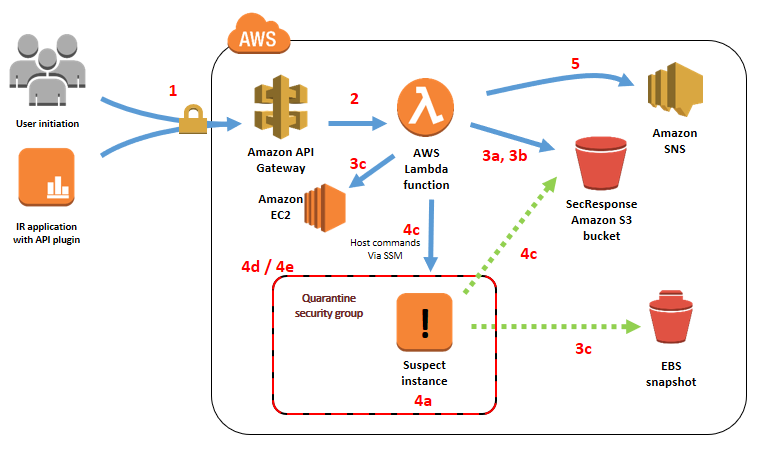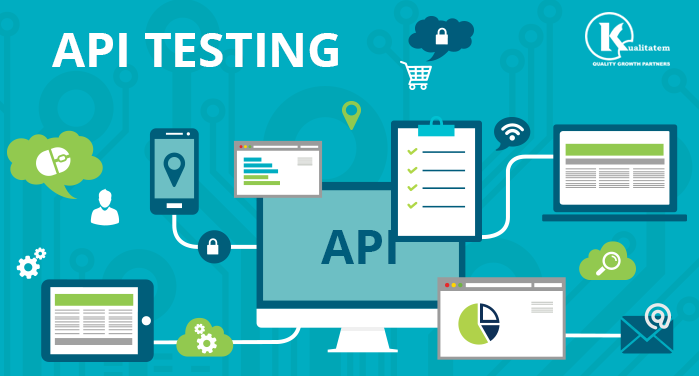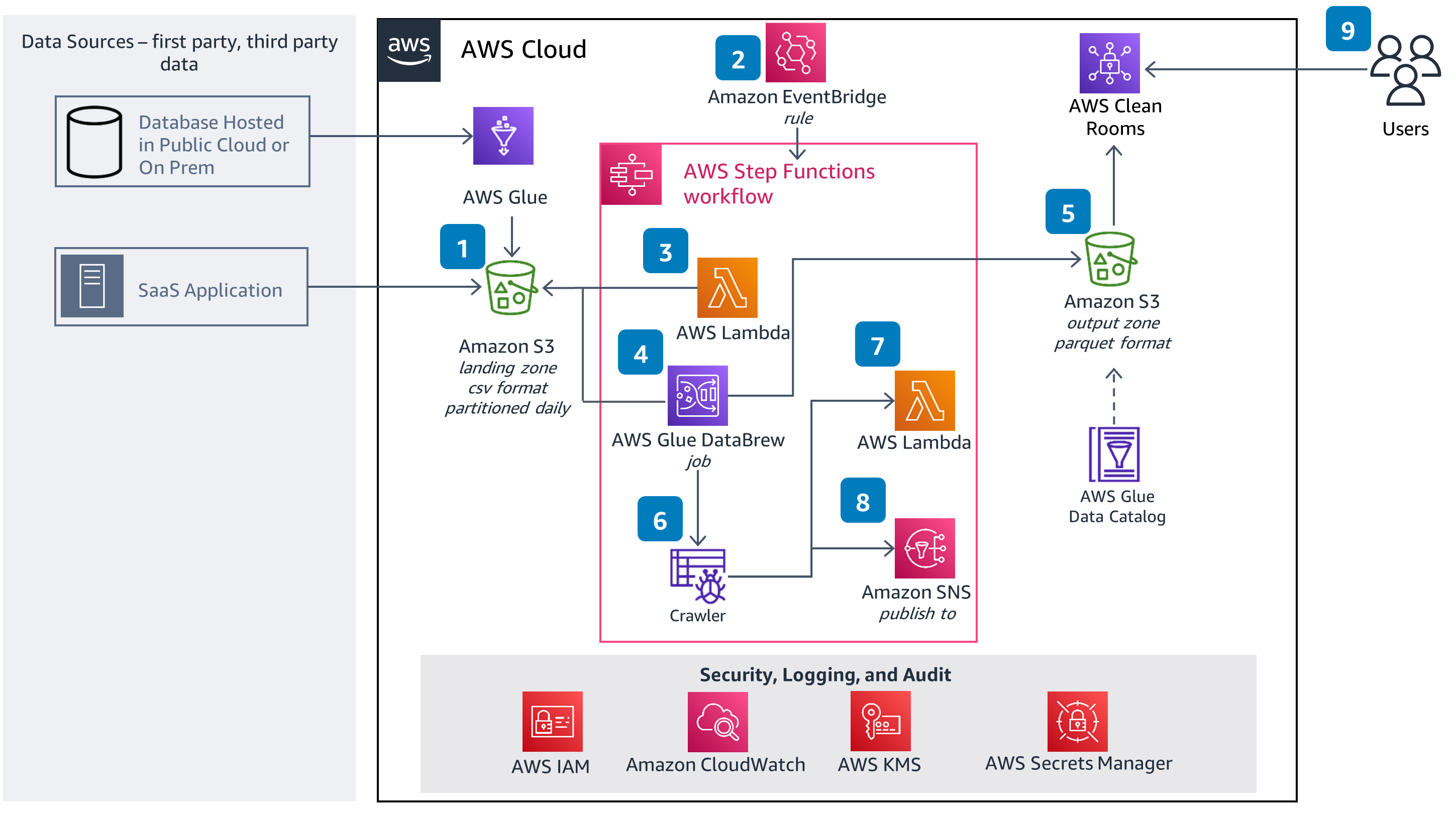Incident Response in AWS - Leveraging Cloud Capabilities for Swift Actions
Incident response (IR) is a critical aspect of any IT environment, aiming to minimize the impact of security incidents by quickly detecting, responding to, and recovering from them. Cloud environments, especially those built on AWS, offer enhanced capabilities that differentiate them from traditional on-premises setups. This blog post will explore the specific features and advantages of incident response in the AWS cloud, focusing on automation, forensic analysis, and operating in isolated environments for investigation. As a DevOps engineer or programmer, understanding these AWS-specific capabilities can help you react efficiently when incidents occur, thereby reducing downtime and potential damage.
The Power of APIs for Automation
One of the key strengths of AWS lies in its rich set of APIs, which can be used to automate routine incident response tasks.
AWS APIs can automate the isolation of compromised instances, greatly accelerating the response time. For example, a compromised EC2 instance can be isolated by modifying the security group with a simple command via the AWS CLI or API. Automation tools like AWS Lambda and Step Functions make it possible to create workflows that manage the entire response process without human intervention.
Automating incident response actions with APIs is not only efficient but also reduces the potential for human error. Imagine an incident where you need to take multiple steps to secure an instance: manually modifying security groups could be error-prone and slow, whereas an API-triggered workflow ensures consistency and speed.
| Task | AWS Service | Description |
|---|---|---|
| Isolate Compromised EC2 | Security Groups API | Modify security groups to restrict network access |
| Snapshot Data Volumes | Amazon EBS API | Capture a snapshot of the attached volumes for forensics |
| Trigger IR Workflow | AWS Step Functions | Automate multi-step incident response processes |
AWS Incident Response Best Practices
Performing Forensics on Data Volumes
Conducting forensic investigations is a crucial part of incident response. AWS provides several tools to make data analysis and investigation more effective.
To perform forensics on data volumes, Amazon EBS snapshots can be used to capture the disk image and “as-is” configuration of an instance. This snapshot can be analyzed without impacting the original instance, making it ideal for investigations that require data integrity.
By using AWS CloudFormation, you can quickly set up an isolated environment—also known as a “clean room”—for a secure forensic investigation. AWS CloudFormation can be employed to deploy a dedicated VPC and forensic EC2 instances with pre-installed analysis tools, allowing you to replicate the exact conditions needed to understand the incident thoroughly.
| Forensic Task | AWS Service | Description |
|---|---|---|
| Data Capture | Amazon EBS Snapshots | Create a snapshot of disk volumes for analysis |
| Clean Room Environment | AWS CloudFormation | Set up a secure, isolated environment for forensics |
| Investigate Snapshots | Forensics EC2 | Analyze volumes copied to a secure EC2 instance |
Cloud Block Storage - Amazon EBS
Operating in a Clean Room with AWS CloudFormation
For conducting a deep investigation without compromising the production environment, AWS provides tools to create a clean room setup that mimics the affected environment.
AWS CloudFormation allows incident response teams to create an isolated, trusted environment within minutes. This clean room setup is particularly useful when malware needs to be analyzed, and investigators need to ensure that no harm can come to the production resources.
The use of CloudFormation templates also allows for reproducibility in investigations. A standard clean room can be deployed whenever an incident is detected, thus avoiding delays caused by manual configurations.
| Clean Room Setup | AWS Service | Description |
|---|---|---|
| Environment Creation | AWS CloudFormation | Quickly deploy a dedicated, secure investigation setup |
| Security Controls | Forensics Security Group | Restrict all inbound/outbound traffic for investigation |
Infrastructure as Code Provisioning Tool - AWS CloudFormation
Incident response in the AWS cloud leverages automation, isolation, and efficient data analysis to ensure that incidents are managed swiftly and effectively. By using AWS’s rich API capabilities, creating forensically sound snapshots with Amazon EBS, and deploying clean rooms with AWS CloudFormation, DevOps teams can enhance their response times, reduce errors, and maintain operational integrity during investigations.
AWS’s infrastructure offers a robust set of tools designed to minimize the impact of security incidents, ensuring a streamlined response that is both cost-effective and resilient. For further insights, explore AWS’s comprehensive incident response guides and training resources.
For more detailed guidance, consider watching AWS Incident Response Videos or exploring AWS documentation on Building a Cloud-Specific Incident Response Plan. These resources can provide you with a broader understanding of AWS’s cloud-specific IR capabilities.



